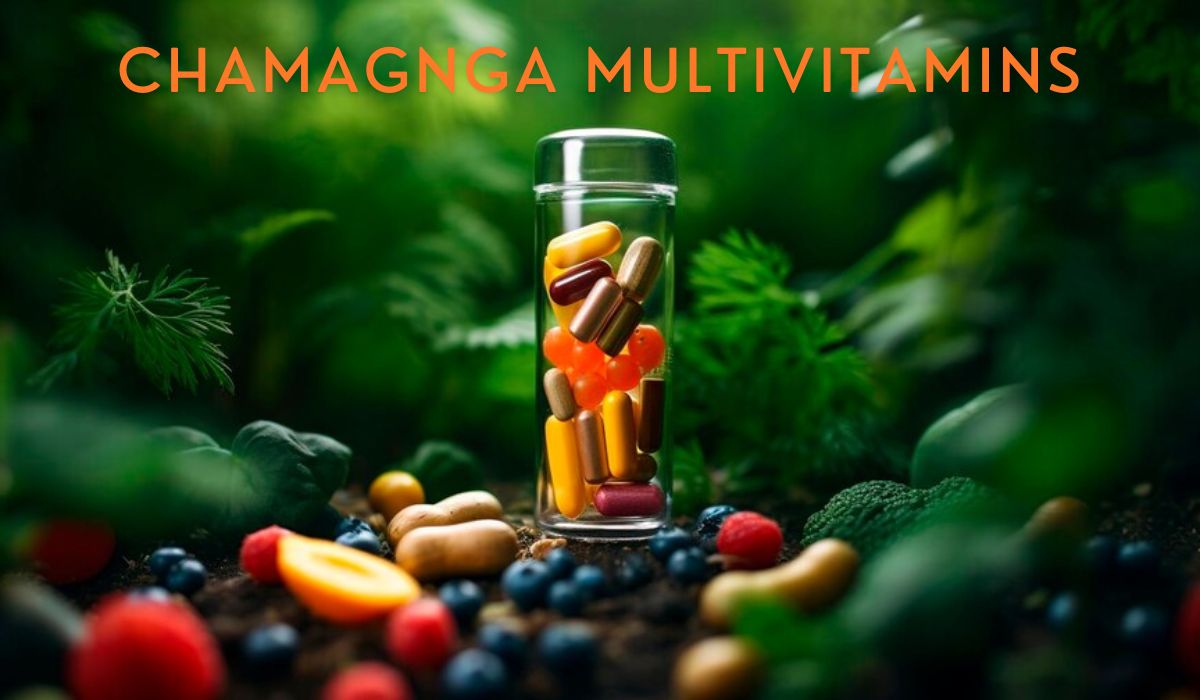HEALTH
Ulcuprazol: Comprehensive Insights into a Powerful Proton Pump Inhibitor

Ulcuprazol is a widely recognized medication belonging to the class of proton pump inhibitors (PPIs). It is commonly prescribed to treat various gastrointestinal conditions such as gastroesophageal reflux disease (GERD), peptic ulcers, and Zollinger-Ellison syndrome. In this article, we will delve deep into the specifics of Ulcuprazol, exploring its mechanism of action, therapeutic uses, dosage guidelines, side effects, and more. We will also provide evidence-based insights to enhance understanding and application of this medication.
Introduction to Ulcuprazol
What is Ulcuprazol?
This is a proton pump inhibitor (PPI) that effectively reduces the production of stomach acid. It is primarily used to manage conditions where excessive stomach acid causes discomfort and potential damage to the digestive tract. The active ingredient in Ulcuprazol works by inhibiting the H+/K+ ATPase enzyme system, also known as the proton pump, in the stomach lining. This leads to a significant decrease in acid secretion, providing relief from acid-related symptoms and allowing the healing of acid-damaged tissues.
Mechanism of Action
The mechanism of action of Ulcuprazol involves the irreversible inhibition of the gastric proton pump (H+/K+ ATPase) in the parietal cells of the stomach. This enzyme is responsible for the final step in the production of gastric acid. By blocking this pump this medicine effectively reduces the secretion of gastric acid, creating a more neutral environment in the stomach. This action not only alleviates symptoms like heartburn and acid reflux but also promotes the healing of ulcers and erosive esophagitis.
Common Uses of Ulcuprazol
It is prescribed for a range of gastrointestinal conditions, including:
- Gastroesophageal Reflux Disease (GERD): GERD is a chronic condition where stomach acid frequently flows back into the esophagus, causing irritation. This proton pump helps reduce acid production, minimizing reflux and alleviating symptoms like heartburn.
- Peptic Ulcers: These are sores that develop on the lining of the stomach, small intestine, or esophagus due to excessive acid. It promotes ulcer healing by reducing acid levels.
- Zollinger-Ellison Syndrome: This rare condition is characterized by tumors in the pancreas or duodenum that cause excessive acid production. Ulcuprazol is used to control acid secretion in patients with this syndrome.
- Erosive Esophagitis: This condition involves inflammation and damage to the esophagus due to acid reflux. It aids in healing and prevents further damage.
Dosage and Administration
Recommended Dosage
The dosage of this medicine varies depending on the condition being treated, the severity of symptoms, and the patient’s overall health. It is essential to follow the prescribed dosage and consult a healthcare provider before making any changes. The following are general guidelines:
- GERD and Erosive Esophagitis: The typical dose is 20-40 mg once daily, usually taken before a meal. Treatment duration may range from 4 to 8 weeks, depending on the response.
- Peptic Ulcers: A dose of 20 mg once daily for 4 to 8 weeks is commonly prescribed. In some cases, the dose may be increased to 40 mg daily.
- Zollinger-Ellison Syndrome: The initial dose may range from 60 mg to 120 mg per day, divided into multiple doses. The dosage may be adjusted based on the patient’s response and acid levels.
Administration Guidelines
It is typically administered orally in the form of tablets or capsules. It should be taken before meals to maximize its effectiveness. For patients who have difficulty swallowing pills, Ulcuprazol is available in formulations that can be dissolved in water or administered via a nasogastric tube.
Missed Dose and Overdose
- Missed Dose: If a dose of Ulcuprazol is missed, it should be taken as soon as possible. However, if it is close to the time for the next dose, the missed dose should be skipped, and the regular dosing schedule resumed. Double dosing should be avoided.
- Overdose: In case of an overdose, immediate medical attention is required. Symptoms of overdose may include confusion, drowsiness, blurred vision, dry mouth, and an irregular heartbeat. Treatment is supportive and symptomatic.
Side Effects and Precautions
Common Side Effects
Like any medication, Ulcuprazol may cause side effects, although not everyone experiences them. Common side effects include:
- Headache: Mild to moderate headaches are a frequent complaint among Ulcuprazol users.
- Nausea and Vomiting: These gastrointestinal symptoms may occur, particularly at the start of treatment.
- Diarrhea or Constipation: Digestive disturbances are common and usually resolve with continued use.
- Abdominal Pain: Some patients report discomfort or pain in the abdominal area.
Serious Side Effects
While serious side effects are rare, they require immediate medical attention if they occur. These may include:
- Allergic Reactions: Symptoms like rash, itching, swelling, severe dizziness, and trouble breathing indicate a possible allergic reaction to Ulcuprazol.
- Severe Diarrhea: Ulcuprazol may increase the risk of Clostridium difficile-associated diarrhea, a potentially serious infection.
- Kidney Problems: Symptoms like changes in urine output, blood in the urine, or swelling in the legs and ankles may indicate kidney issues.
- Bone Fractures: Long-term use of Ulcuprazol, particularly in high doses, has been associated with an increased risk of fractures, particularly in the hip, wrist, and spine.
Precautions
Before starting Ulcuprazol, it is crucial to inform the healthcare provider about any existing medical conditions, especially:
- Liver Disease: Since Ulcuprazol is metabolized in the liver, patients with liver disease may require dosage adjustments.
- Osteoporosis: Long-term use of Ulcuprazol can reduce calcium absorption, potentially exacerbating osteoporosis.
- Vitamin B12 Deficiency: Prolonged use of Ulcuprazol may lead to vitamin B12 deficiency, as stomach acid is necessary for its absorption.
- Pregnancy and Breastfeeding: The safety of Ulcuprazol during pregnancy and breastfeeding is not fully established. It should only be used if clearly needed and under medical supervision.
Drug Interactions
Potential Interactions with Other Medications
Ulcuprazol can interact with several other medications, potentially altering their effectiveness or increasing the risk of side effects. Notable interactions include:
- Warfarin: Ulcuprazol may increase the effects of warfarin, a blood thinner, leading to an elevated risk of bleeding.
- Clopidogrel: There is evidence that Ulcuprazol can reduce the effectiveness of clopidogrel, a medication used to prevent blood clots.
- Methotrexate: When taken with Ulcuprazol, methotrexate levels may increase, leading to toxicity.
- Ketoconazole and Itraconazole: These antifungal medications require an acidic environment for absorption, which Ulcuprazol reduces, potentially lowering their effectiveness.
Food and Alcohol Interactions
- Food: Ulcuprazol is typically taken before meals, but it does not significantly interact with food. However, taking it with or without food can influence its absorption and onset of action.
- Alcohol: While alcohol does not directly interact with Ulcuprazol, it can irritate the stomach lining and worsen the symptoms of GERD or ulcers, counteracting the benefits of the medication.
Clinical Evidence and Studies
Efficacy of Ulcuprazol in GERD Treatment
Several clinical trials have demonstrated the efficacy of Ulcuprazol in managing GERD. In a study published in The American Journal of Gastroenterology, patients with GERD who were treated with Ulcuprazol experienced significant symptom relief and healing of erosive esophagitis compared to those who received a placebo. The study also highlighted the importance of maintaining therapy to prevent relapse of symptoms.
Ulcuprazol in Peptic Ulcer Management
A meta-analysis published in Gastroenterology reviewed multiple studies involving Ulcuprazol in the treatment of peptic ulcers. The analysis concluded that Ulcuprazol was superior to H2-receptor antagonists in promoting ulcer healing and reducing ulcer recurrence rates. The findings underscore the role of Ulcuprazol as a first-line treatment for peptic ulcers, particularly in patients with Helicobacter pylori infections.
Safety Profile in Long-term Use
Long-term use of this medicine has been a subject of interest, particularly concerning its safety. A study published in The Journal of the American Medical Association examined the long-term use of PPIs, including Ulcuprazol, and found an association with an increased risk of bone fractures and vitamin B12 deficiency. These findings suggest the need for regular monitoring and evaluation of patients on prolonged Ulcuprazol therapy, particularly those at risk of osteoporosis or malabsorption.
Patient Experience and Testimonials
Real-world Applications of Ulcuprazol
Patients using this medication for GERD and peptic ulcers often report significant improvements in symptoms and quality of life. A patient case study published in Clinical Medicine Insights: Gastroenterology detailed the experience of a 45-year-old male with chronic GERD. After starting Ulcuprazol, the patient reported complete resolution of heartburn and regurgitation, with endoscopic evidence of healed esophagitis after 8 weeks of treatment. This case exemplifies the effectiveness of Ulcuprazol in managing acid-related disorders.
Common Patient Concerns
Despite its benefits, patients frequently express concerns about the long-term use of Ulcuprazol. Issues such as dependency, potential side effects, and the challenge of discontinuing the medication are common topics of discussion. Healthcare providers play a crucial role in addressing these concerns, ensuring that patients understand the risks and benefits of ongoing Ulcuprazol therapy.
Alternatives to Ulcuprazol
Other Proton Pump Inhibitors
Ulcuprazol is one of several PPIs available on the market. Other commonly prescribed PPIs include:
- Omeprazole: Often considered a standard treatment for GERD and ulcers, omeprazole is comparable to Ulcuprazol in effectiveness but may differ in patient tolerance and cost.
- Lansoprazole: Known for its rapid onset of action, lansoprazole is another alternative for treating acid-related disorders.
- Esomeprazole: A newer PPI, esomeprazole is often preferred for its longer duration of action and higher bioavailability.
H2-Receptor Antagonists
For patients who cannot tolerate PPIs, H2-receptor antagonists such as ranitidine and famotidine offer an alternative. While not as potent as PPIs, these medications reduce acid production and are effective in mild to moderate cases of GERD and peptic ulcers.
Lifestyle and Dietary Modifications
In addition to medication, lifestyle and dietary changes can significantly impact the management of acid-related conditions. Patients are often advised to:
- Avoid Trigger Foods: Spicy foods, citrus fruits, chocolate, and caffeine can exacerbate symptoms of GERD and ulcers.
- Elevate the Head of the Bed: For those with nocturnal symptoms, elevating the head of the bed can prevent acid reflux.
- Maintain a Healthy Weight: Obesity is a risk factor for GERD, and weight loss can reduce symptoms.
Conclusion
It is a highly effective medication for managing a range of gastrointestinal conditions associated with excessive stomach acid. Its ability to reduce acid production and promote healing makes it a valuable tool in the treatment of GERD, peptic ulcers, and Zollinger-Ellison syndrome. However, like all medications, it must be used judiciously, with careful consideration of potential side effects and interactions.
FAQs About Ulcuprazol
1. Can Ulcuprazol be taken long-term?
Long-term use of Ulcuprazol is possible but should be monitored by a healthcare provider due to potential risks like vitamin B12 deficiency and bone fractures.
2. How quickly does Ulcuprazol work?
Ulcuprazol typically begins to reduce acid production within an hour of ingestion, with peak effects occurring within two hours.
3. Is Ulcuprazol safe during pregnancy?
The safety of Ulcuprazol during pregnancy is not fully established. It should only be used if the potential benefits justify the risks, under the guidance of a healthcare provider.
4. Can I stop taking Ulcuprazol suddenly?
Abrupt discontinuation of Ulcuprazol may lead to a rebound increase in stomach acid. It is advisable to taper the dose gradually under medical supervision.
5. What should I do if I miss a dose of Ulcuprazol?
If you miss a dose, take it as soon as you remember. If it is almost time for your next dose, skip the missed dose and continue with your regular schedule. Do not double the dose.
This article provides a comprehensive overview of Ulcuprazol, designed to equip patients and healthcare providers with the knowledge needed to make informed decisions about its use. Whether you’re considering starting it or looking for ways to optimize your current treatment, understanding this medication is the first step toward effective management of acid-related disorders.
HEALTH
Unlocking the Benefits of Combining Vitamin B1 and MSM: A Comprehensive Guide

In the realm of health and wellness, the synergy of nutrients often yields benefits greater than the sum of their parts. Two such powerful allies are Vitamin B1 (thiamine) and Methylsulfonylmethane (MSM). Both play crucial roles in maintaining optimal health, but when combined, they may offer enhanced benefits that go beyond their individual contributions.
This article delves deep into the science behind Combining Vitamin B1 and MSM, exploring how they work together to support energy production, improve nutrient absorption, and promote overall well-being. We’ll also discuss practical applications, benefits, and tips for incorporating these supplements into your daily routine.
Understanding Vitamin B1 (Thiamine)
What Is Vitamin B1?
Vitamin B1, also known as thiamine, is a water-soluble vitamin that plays a fundamental role in converting food into energy. It is essential for the proper functioning of the heart, muscles, and nervous system. Thiamine is involved in several vital biochemical processes, including the Krebs cycle, where it helps convert glucose into adenosine triphosphate (ATP), the primary energy carrier in cells.
The Role of Thiamine in Energy Production
The body relies on thiamine to metabolize carbohydrates, one of the primary sources of energy. Thiamine acts as a coenzyme for the enzyme pyruvate dehydrogenase, which is essential for the breakdown of glucose. Without sufficient thiamine, the body’s ability to generate ATP is compromised, leading to fatigue, weakness, and in severe cases, neurological issues.
You Might Also Like: Chamagnga Multivitamins Unlocking the Power of Complete Nutrition
Sources of Vitamin B1
Thiamine is naturally present in various foods, including:
- Whole grains: Brown rice, oats, and whole wheat.
- Legumes: Lentils, black beans, and peas.
- Nuts and seeds: Sunflower seeds and flaxseeds.
- Meat: Pork and organ meats like liver.
Despite being available in many foods, thiamine deficiency is not uncommon, especially in individuals with poor dietary habits, alcohol dependence, or certain medical conditions.
Exploring Methylsulfonylmethane (MSM)
What Is MSM?
Methylsulfonylmethane, commonly known as MSM, is an organic sulfur compound found naturally in plants, animals, and humans. It is often used as a dietary supplement due to its anti-inflammatory properties and its role in supporting joint health, reducing pain, and promoting skin health.
MSM and Cellular Permeability
One of the most intriguing aspects of MSM is its ability to enhance cellular permeability. This means that MSM helps increase the flexibility and permeability of cell membranes, making it easier for cells to absorb nutrients and expel toxins. By improving cellular permeability, MSM may enhance the overall efficiency of nutrient uptake, leading to better cellular function and health.
Sources of MSM
MSM is found in small amounts in various foods, including:
- Fresh fruits and vegetables: Broccoli, kale, and Brussels sprouts.
- Grains: Barley and wheat germ.
- Legumes: Alfalfa and beans.
- Milk and other dairy products
However, obtaining therapeutic levels of MSM from diet alone is challenging, making supplementation a popular option.
The Synergistic Benefits of Combining Vitamin B1 and MSM Together
How B1 and MSM Work Together
The combination of Vitamin B1 and MSM offers a unique synergy that can support various aspects of health, particularly energy production and nutrient absorption.
- Enhanced Energy Production: Thiamine plays a crucial role in converting carbohydrates into energy, while MSM improves cellular permeability, ensuring that cells efficiently absorb thiamine and other nutrients required for energy metabolism. This synergy can lead to increased energy levels and improved overall vitality.
- Improved Nutrient Absorption: MSM’s ability to enhance cellular permeability means that it can help improve the absorption of thiamine and other vitamins and minerals. This can be particularly beneficial for individuals with compromised digestion or those who struggle to absorb nutrients efficiently.
- Support for Joint and Muscle Health: Thiamine is essential for nerve function and muscle contraction, while MSM is known for its anti-inflammatory properties and its ability to support joint health. Together, they may help reduce muscle pain, support recovery after exercise, and promote overall joint flexibility.
Scientific Evidence Supporting the Combination
Several studies suggest the benefits of combining B1 and MSM:
- Energy Production and Metabolism: Research shows that thiamine supplementation can improve glucose metabolism and energy production, particularly in individuals with low levels of this vitamin. MSM, by enhancing nutrient absorption, may amplify these effects, leading to more consistent energy levels.
- Joint Health: A study published in the Journal of Clinical Rheumatology found that MSM supplementation reduced joint pain and stiffness in individuals with osteoarthritis. While this study focused on MSM alone, the addition of thiamine could further support joint and muscle function by ensuring proper nerve signaling and muscle contraction.
- Nutrient Absorption: A review published in Nutrients highlighted MSM’s role in enhancing cellular permeability, which can lead to better absorption of nutrients like B1. This enhanced absorption may be particularly beneficial for individuals with malabsorption issues or those recovering from illness.
Practical Applications: Combining Vitamin B1 and MSM Together
Supplementation Strategies
For those looking to combine B1 and MSM, there are several strategies to consider:
- Individual Supplements: You can take separate B1 and MSM supplements, adjusting the dosages based on your specific health needs. This approach allows for flexibility in dosing but requires careful management to ensure optimal balance.
- Combined Formulas: Some supplements combine B1 and MSM in a single product, offering convenience and ensuring that you receive both nutrients in appropriate ratios. Look for high-quality formulations from reputable brands that offer bioavailable forms of these nutrients.
Recommended Dosages
The recommended dosages for B1 and MSM can vary based on individual needs:
- Vitamin B1: The Recommended Dietary Allowance (RDA) for thiamine is 1.2 mg per day for men and 1.1 mg per day for women. However, higher doses (50-100 mg) are often used in supplements, especially for those with increased energy demands or specific health conditions.
- MSM: Typical MSM dosages range from 1,000 mg to 4,000 mg per day. Start with a lower dose and gradually increase as needed, monitoring your body’s response.
Timing and Synergy with Other Nutrients
To maximize the benefits of combining B1 and MSM, consider timing your supplements with meals. This can enhance absorption and reduce the risk of gastrointestinal discomfort. Additionally, pairing these supplements with other synergistic nutrients, such as magnesium or Vitamin C, can further enhance their effectiveness.
- Magnesium: This mineral supports energy production and can complement the effects of thiamine.
- Vitamin C: Known for its antioxidant properties, Vitamin C may enhance the absorption of MSM and support collagen formation, further benefiting joint health.
Potential Side Effects and Precautions
While B1 and MSM are generally considered safe, it’s essential to be aware of potential side effects and interactions:
- Thiamine: Thiamine is water-soluble and typically has a low risk of toxicity. However, very high doses (above 500 mg) may cause mild side effects like stomach upset or allergic reactions.
- MSM: MSM is well-tolerated, but some individuals may experience side effects such as nausea, bloating, or diarrhea, especially at higher doses. Start with a lower dose and gradually increase it to minimize these effects.
- Drug Interactions: If you’re taking medications, consult with a healthcare provider before starting any new supplements, as thiamine and MSM may interact with certain drugs.
Real-Life Applications and Success Stories
Case Study: Improved Energy and Joint Health
Jane, a 45-year-old office worker, struggled with chronic fatigue and joint pain. After consulting with a nutritionist, she started taking a combination of Vitamin B1 (50 mg) and MSM (2,000 mg) daily. Within a few weeks, Jane noticed a significant improvement in her energy levels and a reduction in joint pain. By enhancing her body’s ability to produce energy and improving nutrient absorption, the B1 and MSM combination helped Jane regain her vitality and reduce discomfort.
Athlete Performance and Recovery
John, a 30-year-old amateur athlete, incorporated B1 and MSM into his supplement regimen to support his intense training schedule. He found that the combination not only boosted his energy during workouts but also improved his recovery time, allowing him to train harder and more frequently. The anti-inflammatory properties of MSM, combined with thiamine’s role in energy production, made this combination a valuable part of his performance strategy.
Final Thoughts: The Future of Combining Vitamin B1 and MSM Together
As research continues to uncover the benefits of nutrient synergy, Combining Vitamin B1 and MSM stands out as a promising approach to enhancing energy production, improving nutrient absorption, and supporting overall health. Whether you’re looking to boost your energy levels, support joint health, or improve your body’s nutrient absorption, combining B1 and MSM together offers a powerful, evidence-based solution.
Optimizing Your Health with B1 and MSM
To optimize your health with B1 and MSM, consider the following steps:
- Consult a Healthcare Provider: Before starting any new supplement regimen, it’s essential to consult with a healthcare provider to determine the appropriate dosages and ensure that the combination is right for you.
- Start Slowly: Begin with lower doses of B1 and MSM, gradually increasing as your body adjusts. Monitor your response and adjust the dosage as needed.
- Incorporate a Balanced Diet: While supplements can provide targeted support, a balanced diet rich in whole foods will provide a broad spectrum of nutrients that work synergistically with B1 and MSM.
- Stay Informed: Keep up with the latest research and trends in nutrition and supplementation. As new studies emerge, you’ll be better equipped to make informed decisions about your health.
By understanding the unique benefits of combining B1 and MSM together, you can harness the power of these nutrients to support your health, enhance your well-being, and unlock new levels of vitality.
HEALTH
Chamagnga Multivitamins: Unlocking the Power of Complete Nutrition
HEALTH
Senisieta: The Ancient Elixir of Radiant and Youthful Skin

In the world of beauty and skincare, few things capture the imagination like the promise of eternal youth. Throughout history, countless potions, creams, and rituals have claimed to hold the secret to maintaining youthful, radiant skin. Among these legends, the mysterious elixir known as “Senisieta” stands out as a symbol of timeless beauty and natural radiance. Steeped in ancient lore and whispered about in the most exclusive circles, Senisieta is said to be the ultimate answer to skin that defies age and glows with vitality.
The Origins of Senisieta: Myth or Reality?
The story of Senisieta is shrouded in mystery, with its origins tracing back to ancient civilizations. According to legend, Senisieta was first discovered by a secretive group of alchemists who were devoted to finding the perfect formula for ageless beauty. These alchemists, believed to have lived in a remote region of the world, spent decades experimenting with rare herbs, minerals, and natural extracts, searching for a potion that could restore youthfulness and enhance the skin’s natural glow.
Over time, the formula for Senisieta was passed down through generations, each keeper of the secret adding their own unique ingredients and refining the process. It is said that only a select few were ever granted access to this elixir, and those who used it were revered for their ageless appearance and radiant skin.
But is there any truth to the legend of Senisieta, or is it merely a fantastical tale passed down through the ages?
You may also like: Oridzin A Powerful Antioxidant
The Ingredients of Senisieta: A Natural Approach to Skincare
While the exact recipe for Senisieta remains a closely guarded secret, various sources have speculated about the ingredients that may be part of this legendary elixir. What makes Senisieta particularly captivating is its supposed reliance on natural, plant-based ingredients, many of which have been used for centuries in traditional medicine and skincare.
1. Rosehip Oil
One of the rumored key ingredients in Senisieta is rosehip oil, a potent natural extract known for its high concentration of vitamins A and C. Rosehip oil is celebrated for its ability to promote cell regeneration, reduce the appearance of fine lines and wrinkles, and even out skin tone. Its antioxidant properties help protect the skin from environmental damage, making it a powerful ally in the quest for youthful skin.
2. Sea Buckthorn Berry
Another possible component of Senisieta is sea buckthorn berry, a superfruit rich in omega fatty acids and vitamins. Sea buckthorn is prized for its ability to nourish the skin, improve elasticity, and combat dryness. Its bright orange hue suggests a high content of carotenoids, which are known to support healthy skin and protect against premature aging.
3. Frankincense
It is an ancient resin with a long history of use in spiritual and medicinal practices, is also believed to play a role in the Senisieta formula. Frankincense is known for its anti-inflammatory and skin-healing properties. It has been used to reduce the appearance of scars, blemishes, and age spots, and its calming aroma is said to promote a sense of well-being and tranquility.
4. Aloe Vera
It is, a plant revered for its soothing and hydrating properties, is another ingredient that may be found in Senisieta. Aloe vera is rich in vitamins, minerals, and enzymes that support skin health. It is particularly effective at calming irritated skin, reducing redness, and providing deep hydration, which is essential for maintaining a youthful complexion.
The Science Behind Senisieta: Can It Deliver on Its Promises?
While the legend of Senisieta is captivating, the real question is whether such an elixir could truly deliver on its promises of youthful and radiant skin. Modern science has explored many of the natural ingredients rumored to be part of Senisieta, and the results are promising.
1. The Role of Antioxidants in Skin Health
Antioxidants, such as those found in rosehip oil and sea buckthorn berry, play a crucial role in protecting the skin from oxidative stress. Oxidative stress is caused by free radicals, unstable molecules that damage skin cells and accelerate the aging process. By neutralizing free radicals, antioxidants help to preserve the skin’s youthful appearance and prevent the formation of wrinkles and fine lines.
2. Cell Regeneration and Skin Renewal
Vitamins A and C, both of which are abundant in the ingredients associated with Senisieta, are known to support cell regeneration and skin renewal. Vitamin A, in the form of retinoids, encourages the production of new skin cells and collagen, while vitamin C is essential for collagen synthesis and brightening the skin. Together, these vitamins work to improve skin texture, firmness, and radiance.
3. Hydration and Skin Elasticity
Hydration is a key factor in maintaining youthful skin, and ingredients like aloe vera and sea buckthorn berry are known for their hydrating properties. Proper hydration keeps the skin plump, smooth, and elastic, reducing the likelihood of wrinkles and sagging. Additionally, omega fatty acids found in sea buckthorn help to reinforce the skin’s barrier, locking in moisture and protecting against environmental aggressors.
Senisieta in Modern Skincare: A Symbol of Natural Beauty
In today’s world, where consumers are increasingly seeking out natural and sustainable beauty products, the concept of Senisieta resonates more than ever. While the exact formula may be lost to history, the principles behind Senisieta—using natural ingredients to enhance the skin’s natural beauty—are alive and well in modern skincare.
1. The Rise of Clean Beauty
The clean beauty movement, which emphasizes the use of non-toxic, natural ingredients, is a testament to the enduring appeal of Senisieta’s philosophy. Consumers are becoming more aware of the potential risks associated with synthetic chemicals in skincare products and are turning to brands that prioritize transparency, sustainability, and the use of plant-based ingredients.
Example: Brands like Tata Harper, Herbivore Botanicals, and Drunk Elephant have gained popularity for their commitment to clean beauty. These brands offer products that harness the power of natural ingredients, similar to those rumored to be in Senisieta, to deliver effective skincare solutions without compromising on safety.
2. DIY Skincare and the Return to Traditional Remedies
In addition to the popularity of clean beauty brands, there has been a resurgence of interest in DIY skincare and traditional remedies. Many people are returning to age-old practices, such as using rosehip oil or aloe vera directly from the plant, to nourish and care for their skin.
Example: The use of turmeric, honey, and yogurt in DIY face masks is a modern reflection of the ancient wisdom embodied in Senisieta. These natural ingredients are known for their brightening, moisturizing, and anti-inflammatory properties, making them a staple in many people’s skincare routines.
The Cultural Impact of Senisieta: A Symbol of Timeless Beauty
Beyond its practical applications in skincare, Senisieta has also taken on a symbolic meaning in popular culture. It represents the quest for timeless beauty, the desire to preserve youth, and the power of nature to heal and rejuvenate. This cultural impact is evident in literature, art, and even in the way we talk about beauty today.
1. Senisieta in Literature and Folklore
The legend of Senisieta has inspired countless stories and folktales, where the elixir is often depicted as a magical potion that grants eternal youth or unparalleled beauty. These stories reflect the universal human desire to hold onto youth and vitality, as well as the belief in the transformative power of nature.
Example: In modern literature, the concept of a mysterious elixir that bestows ageless beauty can be seen in works like “The Picture of Dorian Gray” by Oscar Wilde, where the protagonist remains youthful while a portrait ages in his place, symbolizing the cost of vanity and the pursuit of eternal youth.
2. Senisieta as a Metaphor in Art
In art, Senisieta can be seen as a metaphor for the delicate balance between nature and beauty. Artists have long used natural elements—flowers, fruits, and plants—as symbols of beauty, fertility, and the passage of time. The idea of an elixir made from nature’s bounty captures the essence of this relationship, reminding us that true beauty is often found in simplicity and purity.
Example: The use of floral motifs in art, from Renaissance paintings to contemporary photography, echoes the idea of Senisieta as a natural, life-giving force that nurtures and sustains beauty. These works often explore themes of transience, the cycles of life, and the enduring allure of the natural world.
The Future of Senisieta: Embracing Nature in Skincare
As we look to the future, the principles behind Senisieta are likely to continue influencing the beauty industry. With a growing focus on sustainability, ethical sourcing, and the use of natural ingredients, Senisieta’s legacy lives on in the products and practices that define modern skincare.
1. Sustainability and Ethical Sourcing
One of the key trends shaping the future of skincare is the emphasis on sustainability and ethical sourcing. Consumers are increasingly demanding transparency about where ingredients come from, how they are harvested, and the environmental impact of their production. This shift aligns with the philosophy of Senisieta, which celebrates the use of natural, responsibly sourced ingredients.
Example: Brands like Lush and The Body Shop have made sustainability a core part of their mission, offering products that are not only effective but also kind to the planet. These brands emphasize the importance of ethical sourcing, fair trade practices, and reducing waste, all of which resonate with the values embodied by Senisieta.
2. Personalized Skincare
Another emerging trend is the move towards personalized skincare, where products are tailored to meet the specific needs of an individual’s skin. This approach reflects the idea that beauty is not one-size-fits-all and that the best results come from understanding and responding to the unique characteristics of each person’s skin.
Example: Companies like Curology and Function of Beauty are leading the way in personalized skincare, offering products that are customized based on factors such as skin type, concerns, and environmental conditions. This personalized approach echoes the bespoke nature of the Senisieta elixir, which was said to be crafted with great care and attention to the needs of its users.
Conclusion:
The legend of Senisieta, whether real or imagined, continues to captivate and inspire. It represents more than just a mythical elixir; it symbolizes the timeless pursuit of beauty, the power of nature, and the belief that true radiance comes from within. As we navigate the ever-evolving world of skincare, the principles of Senisieta—natural ingredients, thoughtful formulation, and respect for the environment—remain as relevant today as they were in ancient times.
In a world where trends come and go, the story of Senisieta reminds us that some things are truly timeless. The pursuit of natural, radiant, and youthful skin is not just a goal; it’s a journey, one that connects us to our past, grounds us in the present, and guides us into the future. Whether or not the elixir itself exists, the values it represents continue to shape the way we think about beauty, skincare, and our connection to the natural world.
FAQs on Senisieta
1. What is Senisieta?
Senisieta is a legendary elixir believed to offer naturally radiant and youthful skin. The elixir is said to be made from natural, plant-based ingredients and has been passed down through generations.
2. Are the ingredients of Senisieta known?
The exact formula of Senisieta remains a mystery, but it is rumored to include ingredients like rosehip oil, sea buckthorn berry, frankincense, and aloe vera—each known for their skin-enhancing properties.
3. Is there any scientific basis for Senisieta’s effectiveness?
Modern science supports the skincare benefits of ingredients like rosehip oil and sea buckthorn berry, which are rich in antioxidants, vitamins, and fatty acids that promote cell regeneration, hydration, and skin elasticity.
4. How does Senisieta relate to modern skincare trends?
Senisieta embodies the principles of clean beauty, sustainability, and the use of natural ingredients—values that are increasingly popular in today’s skincare industry.
5. Is Senisieta a real product available today?
While Senisieta is more of a mythical concept, its philosophy of using natural ingredients to achieve youthful skin is reflected in many modern skincare products and practices.
6. What cultural impact does Senisieta have?
Senisieta symbolizes the timeless pursuit of beauty and the power of nature. It has inspired literature, art, and modern beauty practices that emphasize natural, holistic approaches to skincare.
-

 TECHNOLOGY11 months ago
TECHNOLOGY11 months agoStay Ahead with iLikeCPMix: Adapting to Industry Trends
-

 TECHNOLOGY11 months ago
TECHNOLOGY11 months agoSSIS 816: Mastering Seamless Connectivity Across Platforms
-

 BUSINESS11 months ago
BUSINESS11 months agoCrypto30x: Mastering Profit-Taking Strategies in the Crypto Market
-

 BUSINESS11 months ago
BUSINESS11 months agoBitcoin Price Fintechzoom: Understanding the Basics of Digital Currency
-

 TECHNOLOGY11 months ago
TECHNOLOGY11 months agoRosewellsk: A Comprehensive Overview of Its Impact and Relevance
-

 ENTERTAINMENT11 months ago
ENTERTAINMENT11 months ago17th Century Death Roulette: The Perils and Superstitions of a Dangerous Era
-

 TECHNOLOGY11 months ago
TECHNOLOGY11 months agoBoltból: Revolutionizing Device Efficiency and Connectivity
-

 TECHNOLOGY11 months ago
TECHNOLOGY11 months agoVaçpr: Revolutionizing Project Management


Monet Gyger
June 30, 2025 at 7:37 am
Your comment is awaiting moderation.
Very efficiently written post. It will be helpful to anyone who utilizes it, as well as myself. Keep up the good work – i will definitely read more posts.